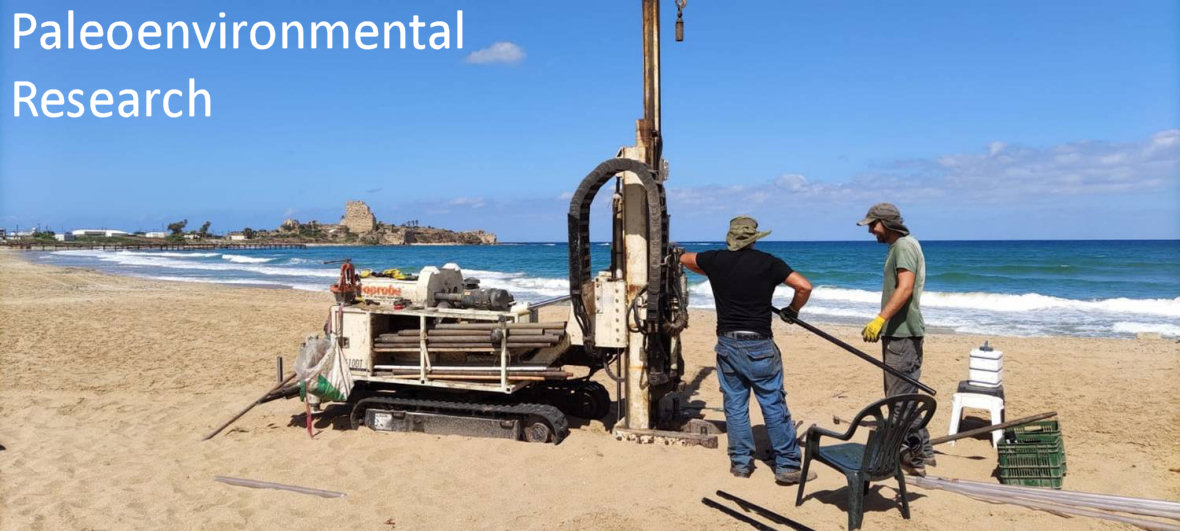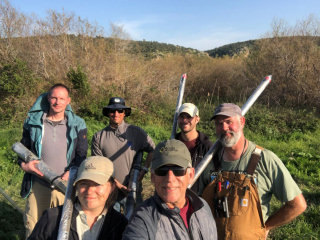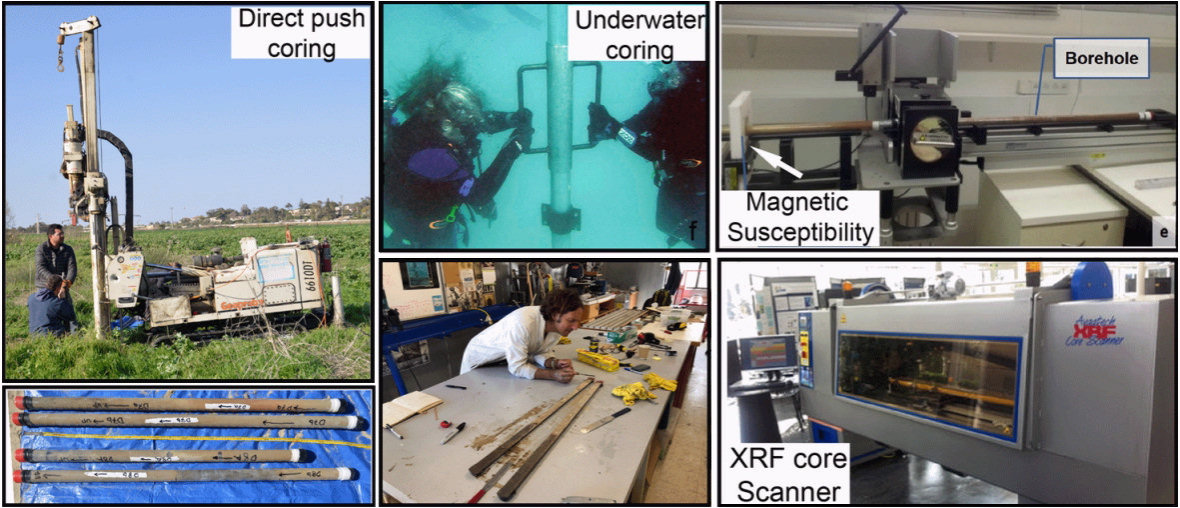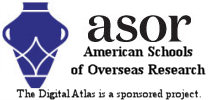The Digital Archaeological Atlas of the Holy Land

Geoprobe drilling rig extraction of a sediment core with evidence of paleoenvironmental change from Atlit, Israel (Photo by Omri Nahom).

UC-San Diego - University of Haifa coring team
on the Carmel coast (Photo by T. E. Levy).
The research project entitled "Late Pleistocene-Holocene Climate Change and Human Response along the Carmel Coast of Israel - A New Paleo-environmental Archive for the Eastern Mediterranean" consists of a collaboration of specialists hailing from the Scripps Center for Marine Archaeology at the University of California San Diego (UCSD), Utah State University, the University of Haifa, Israel Limnological Oceanographic research institute, the Geologic Survey of Israel, and the University of Iceland. The project aims to tracks climate fluctuation (temperatures and participation) and possible extreme landscape processes (sea level rise oscillations, hydrological changes, tsunamis, fire history, swamping of landscape) to investigate the environmental context of human social evolution from sedentary settlements through the birth of empires by producing a new continuous paleoenvironmental record in decadal - centurial resolution for the Levantine coast. This new archive will complement previously published environmental archives from the deep sea and eastern parts of the Mediterranean by integrating new archaeology, sedimentology, geochemistry, paleontology, and palynology datasets. Accordingly, over the last year studies have been initiated assessing the long-term dynamics between natural ˗ human interactions over the early to late- Holocene. These investigations which are conducted by me and three graduate students, utilizes sediment core records retrieved from the Carmel coast of Israel.
The Carmel coast ongoing research project relies on previously obtained as well as recently drilled sediment cores retrieved during four coring expeditions, conducted during 2018, 2019, 2020 and 2021 on the Carmel coast. The terrestrial coring was accomplished with a Geo-probe 6620DT direct push corer, acquiring sediments from below the surface until reaching the top late Pleistocene calcareous aeolianite sandstone (locally known as kurkar) surface. The new borehole drilling locations were held in proximity to known archaeological reach sites in the eastern and western throughs adjacent to the tel-Dor, Kabara Cave, Tel-Mevorach, Neven yam, and Atlit Yam. Altogether six locations were cored, yielding 40 cores with lengths ranging from 4.5 to 16.5 meters that together sum up to 500 m of sediment. The core dataset was shipped to UC-San Diego’s Scripps Center of Marine archeology (SCMA) lab in which the cores are currently stored in designated refrigerators. Once reaching the SCMA lab the core record was first split and curated and is currently assessed by sedimentological examinations (i.e., grains size, total organic carbon, Stable Isotope analysis for Nitrogen and carbon, paleontological analysis) radiometric dating technics (i.e., optically stimulated luminescence and radiocarbon).

Surveying techniques and analysis procedures conduct in the Carmel coast research.
These include of core extraction using the Geo-probe direct push drilling rig; underwater coring description process; Magnetic susceptibility; X-ray fluorescence analysis.




